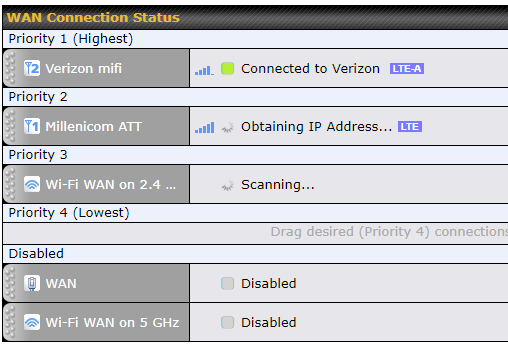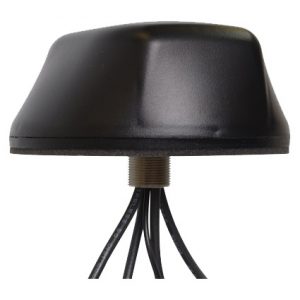One of the most critical things for many people is having solid internet while on the road. We couldn’t imagine not having the ability to be connected – I have had some form of always-on internet since 1997! We did a lot of research, and came to the following conclusions:
We needed at least two internet providers
Hardware should be mounted and set up like a house (no mifi as service)
Unlimited data if possible (with streaming, we expect to use hundreds of gigabytes per month)
Our Internet Providers
At the time of this writing, there are 3 big players. AT&T, Verizon and T-Mobile (Sprint is slowly become T-Mobile). From all our research, the best coverage comes from AT&T and Verizon. We were fortunate to get a pre-paid Verizon unlimited plan before they stopped selling it. AT&T has been more of a problem, and we are doing a post-paid iPad plan and a 3rd party reseller (which has proven to be a nightmare).
Our Setup
A few critical pieces make up our Internet strategy. The core of our setup is a Pepwave Max Transit DUO router with dual cat-12 modems.

This router is a beast (with a price tag to match). Peplink is mainly in the business of providing commercial solutions – think buses, police, fire and any other business that needs Enterprise-level gear and support. This means they are usually behind the curve in technology (in these markets, rolling out cool new things isn’t a priority), but usually everything is just rock solid.
Having two modems (each with 2 SIM cards) lets this router do things that most cannot – it will test each connection and automatically make the fastest/best be the primary. For example, at the park we are currently at, we have Verizon as the primary, with a failover to AT&T. Even cooler, we also are connected to the parks wifi – which doesn’t work very well but is available. That gives us a third option if the other options aren’t working.

This is definitely somewhat of a luxury – you could have 2 jetpacks and make test both out when you get to a new location – or even change out the SIM’s on the same jetpack. But connectivity is important to us, and portable jetpacks are not really designed to be on 24×7. And we found that this router does a better job compared to our Verizon 8800L with the Netgear MIMO antenna.
One reason we think we are getting better reception with this router is the fact we paired it up with a solid roof antenna, the Mobile Mark LTMG508 5in1 roof antenna.

This antenna is smaller than it looks – easily fitting on most RV roofs. The only downside is you have to provide a ground plane – unlike the Poynting 5in1. For us this was no big deal – a small piece of galvanized metal from Home Depot worked perfectly. We ended up using a couple screws and sealant on top of our first AC unit. The antenna sticks just a few inches higher than everything else on our roof, and seems to be a good compromise of coverage and height. We hate to go ANY higher in height, but our Girard awnings create a metal ring around our entire roof (which came in handy for our solar install).

Garrett has spent most of his life in the IT industry, but his passion is music and photography. Trying to enjoy his remaining trips around this big blue spinning ball!